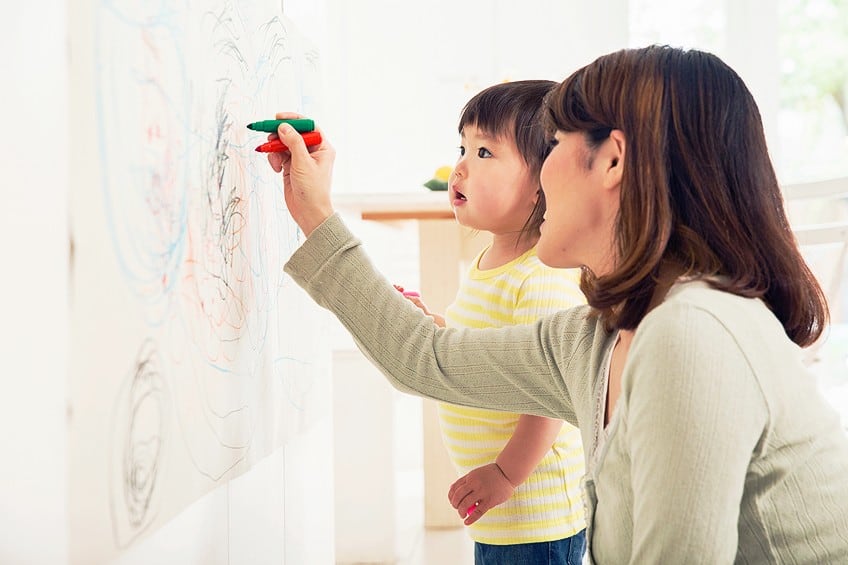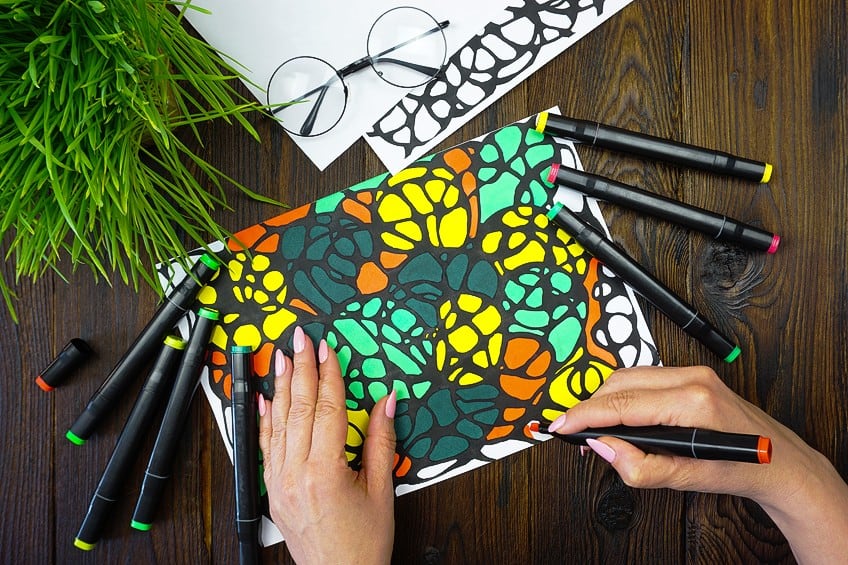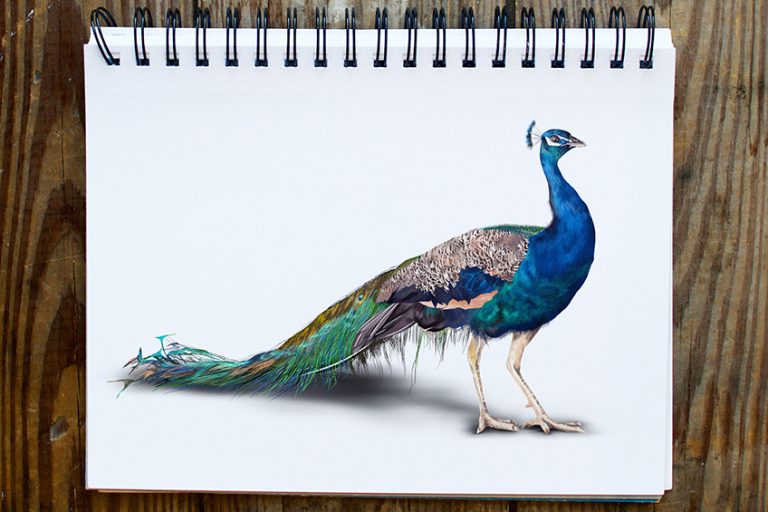Benefits of Drawing – Can Drawing Improve Your Mental Health?
Drawing can be a great hobby to learn, but you might be afraid that you are not good enough at it. The fact is, it does not matter what your skill level is, or even what your age is, as there are still many benefits to drawing. You also do not need many materials to begin drawing, so there is no real excuse for not trying it. To show you that there are many advantages of drawing, we have compiled a list for you!
What Is Drawing?
Before we get into the benefits of drawing, let us have a look at what drawing is. The definition of drawing first states that it is a type of visual art. Next, a drawing is created by using an instrument or tool to mark a surface, like paper or canvas. Drawing or art is a way of exploring objects and nature and is an ideal way to express emotions and communicate a message. Drawing can be utilized as a means to learn, plan, and also remember information. The most common tools considered for drawing include pencils, chalk, charcoal, pens, crayons, and brushes, or a combination of some of them. However, today, we can also include digital drawing, which uses a tablet and a stylus to draw with.
When it comes to drawing benefits, there are quite a few, and we will be dealing with many of them in more detail. Some of the basic advantages of drawing include helping to improve memory, reduce stress, and enhance creativity.

Drawing is a way for people to express themselves, so it is also a great way to improve communication. What is generally the reason people do not want to begin drawing? A lot of people think that they are not good at drawing and that their attempts are poor when compared to others. However, there is no wrong or right way to draw. Yes, some people can draw fantastically, but you must never make comparisons. Many people might have some talent, but it takes a lot of perseverance, patience, and hard work to develop the necessary skills. If you are willing to learn, then you can also draw and create wonderful art pieces. The journey or process of learning to draw also has many benefits, which we will now be taking a closer look at.
Improves Mental Health
When it comes to drawing benefits, the one that tops the list is stress relief. Drawing can be a way of unplugging your mind and focusing on something more relaxing. By releasing your stress, you are also helping to improve your mental health. The process of drawing involves focusing on a particular project, rather than letting your mind wander, worry, and obsess about certain matters. You can develop a habit of drawing to help calm and motivate you, by practicing your drawing skills every day. One way to do this is to follow guided video tutorials or try out a drawing challenge. You can find and join many of these challenges online.

Improves Problem-Solving Skills
When learning how to draw, the process usually involves a lot of mistakes and do-overs, until you achieve the results you want. There are also different ways you can achieve your goals, and you sometimes need to think more creatively to solve problems. Drawing and art are great ways to grow critical thinking skills. In life, these skills can help you with adapting to certain situations and widen your perspective. So, drawing is capable of encouraging different ways of thinking and dealing with problems.
Practicing drawing can help you to come up with innovative solutions, which can help you to overcome obstacles and achieve your goals.
Improves Emotions
One of the benefits of drawing is the increase in positive emotions and the lessening of worry and anxiety. When drawing, the process encourages positive brain chemistry, which can include the secretion of chemicals in the brain, such as norepinephrine, serotonin, endorphins, and dopamine. In the end, you feel happier and have gained a sense of achievement once you are finished with a drawing project. This means that those who regularly participate in drawing or art seem more optimistic and relaxed. Drawing is also a way of boosting self-esteem and confidence. If you set out to draw something and complete it, you are achieving your goal, and by creating a beautiful piece of art, you can also be proud of your accomplishment. Many drawing classes are done in groups, which can also make the whole process more social, which then helps improve confidence while making new friends.

Improves Observation Skills
You need to pay attention and observe when you are drawing or painting, which is why artists are often more observant of their environment. This is because they learn to understand how to create shading, colors, and different lighting effects, which are all foundational skills for drawing.
You train your brain to notice things, even the commonplace things in life.
Improves Focus
When you improve your observational skills, you also help your brain focus more. Being creative helps the brain to form new connections and pathways. We also make use of both sides of the brain when drawing, the left side for more logical thinking, and the right side for creative thinking. Overall, this helps you to develop your focus as well as improve your strategic thinking skills.

Enhances Fine Motor Skills
Fine motor skills are important for doing everyday tasks and are something we learn and develop as we grow. It usually involves the smaller muscles you find in the hands, which then perform certain tasks like holding a pencil, writing, turning pages, eating, buttoning a shirt, using scissors, and also typing away on the computer keyboard. The focus is often on children when it comes to improving fine motor skills. However, adults can also always improve on these skills. Drawing is a great way to do this and requires precise hand movements.
It helps to improve the brain’s proficiency in sending messages to make specific movements.
Improves Coordination
Besides fine motor skills, drawing can also aid in improving hand-eye coordination. In many cases, when practicing drawing, you are relying on both touch and sight to create a drawing or painting. When you practice drawing without constantly looking at the paper or canvas, the left brain seems to ignore the specifics of spatial awareness and allows the right brain to take control. However, drawing can also improve spatial awareness and helps you to see and remember details of things all around you. This means you can become adept at using your eyes to guide the movements of your hands, without relying on memorized patterns and being able to draw to scale without difficulty. It also improves overall coordination and is essential with things like sports, tying shoes, and other life skills.

Drawing also improves visual perception, meaning that it helps you to remember visual objects, and observe that some of these objects are the same, but may differ in size and color. Drawing can also help you to find hidden shapes and objects within a picture. All of these things we have mentioned mean drawing can also help you with developing dexterity, and it can assist with applying more precision and control to movements.
Boosts Cognitive Development
Drawing is fun and can boost the brain’s activity, which will help to keep your brain and the rest of your body healthy. When participating in creative activities, it can help to enhance memory or recollection skills. You have to learn drawing skills and techniques, and then you have to recall and use them. This is why many therapists use art and drawing for Alzheimer’s patients. Also, we have to figure out what to draw, so we might think of a memory that is useful for an idea. This can stimulate memories of different foods we have eaten, experiences we have had, and people we have met. All of this helps to revive and develop our brains. When learning to draw as a child, children’s brains form connections and networks quite quickly.
When drawing or painting, they also use their senses, which can help them to remember and recognize shapes, colors, and patterns. It is said that children’s drawings can be an indication of their intellectual development.
Improves Planning and Analytical Skills
We have mentioned that you use the right side of your brain while drawing and being creative, but you also use the left side of your brain. The left side is used more for logical or analytical thinking. While learning to draw, children and adults will need to create a plan of what to draw and how to go about accomplishing this. You need to consider shapes, positioning, and colors, among other things, so that you can produce the image you want to create. This type of planning is needed for many life skills, especially for children who will eventually mature into adulthood. This again strengthens a person’s ability to focus and also helps you develop thinking strategically.

Promotes Self-Expression and Communication
Drawing is one of those activities that requires you to use your imagination. You use your imagination to create unique ideas, and it helps you to visualize and then process what you are thinking. Drawing, therefore, helps you to express yourself in a safe and useful way. Our thoughts remain intangible until we can express them. Putting pen or pencil to paper can then give you a more clear idea of what you are thinking, and it can help you to improve and develop the idea. You can convey your story without needing to say anything. In therapy, drawing can be used as a way for children and adults to release their emotions.
For example, a child might draw a page full of dark clouds to symbolize how sad or angry they are feeling. The subject and colors chosen can help with identifying how a person is feeling, without having to verbalize how they feel.
Improves Emotional Intelligence
Drawing helps us to get in touch with our emotions. As you search for what you want to draw and how you are going to proceed, you have to take into consideration how you feel at that moment. Once you can understand what you are feeling and why you have that emotion, you can begin to work out how to express it, process it, and work through it. You can also develop more sensitivity towards others and their feelings, thus promoting empathy. Drawing is a great way of expression for those who cannot verbally tell you how they are feeling. Drawing, as a visual language, is also a tool that can be used across verbal and cultural boundaries, conveying how a person truly feels inside.

The great thing about drawing, or any other art form in fact, is that you do not have to be a professional artist to gain all the above benefits we have mentioned. All you need to have is a few materials, and the time to relax and bring out your creative side. The ideas are endless, and there is no perfect way to be creative, so it is possible for everyone to do! So, pick up your pencil and start drawing, and you will begin to see the benefits of drawing in no time!
Frequently Asked Questions
What Are the Benefits of Drawing?
There are countless drawing benefits, and many of them have already been developed when you went to school and as you have grown up. Some of the advantages of drawing include stress relief, improving confidence, enhancing memory and focus, improving creativity, and enhancing general emotional well-being.
Can Everybody Be Good at Drawing?
Many people have a natural talent for drawing, but it is essentially a skill anybody can learn. Like any other skill, you will need to learn the various techniques, work with them, and practice them, which means you will also need to be patient with yourself.
What Occurs in the Brain While You Draw?
When you are drawing, it has been proven that it helps to improve many cognitive functions, as there is an increase in positive brain chemicals like dopamine and serotonin. When drawing, you use the right side of the brain as well as the left, which can help to develop how you perceive the world around you.
Matthew Matthysen is an educated multidisciplinary artist and illustrator. He successfully completed his art degree at the University of Witwatersrand in South Africa, majoring in art history and contemporary drawing. The focus of his thesis was to explore the philosophical implications of the macro and micro-universe on the human experience. Matthew uses diverse media, such as written and hands-on components, to explore various approaches that are on the border between philosophy and science.
Matthew organized various exhibitions before and during his years as a student and is still passionate about doing so today. He currently works as a freelance artist and writer in various fields. He also has a permanent position at a renowned online gallery (ArtGazette) where he produces various works on commission. As a freelance artist, he creates several series and successfully sells them to galleries and collectors. He loves to use his work and skills in various fields of interest.
Matthew has been creating drawing and painting tutorials since the relaunch in 2020. Through his involvement with artincontext.org, he has been able to deepen his knowledge of various painting mediums. For example, watercolor techniques, calligraphy and lately digital drawing, which is becoming more and more popular.
Learn more about Matthew Matthysen and the Art in Context Team.









